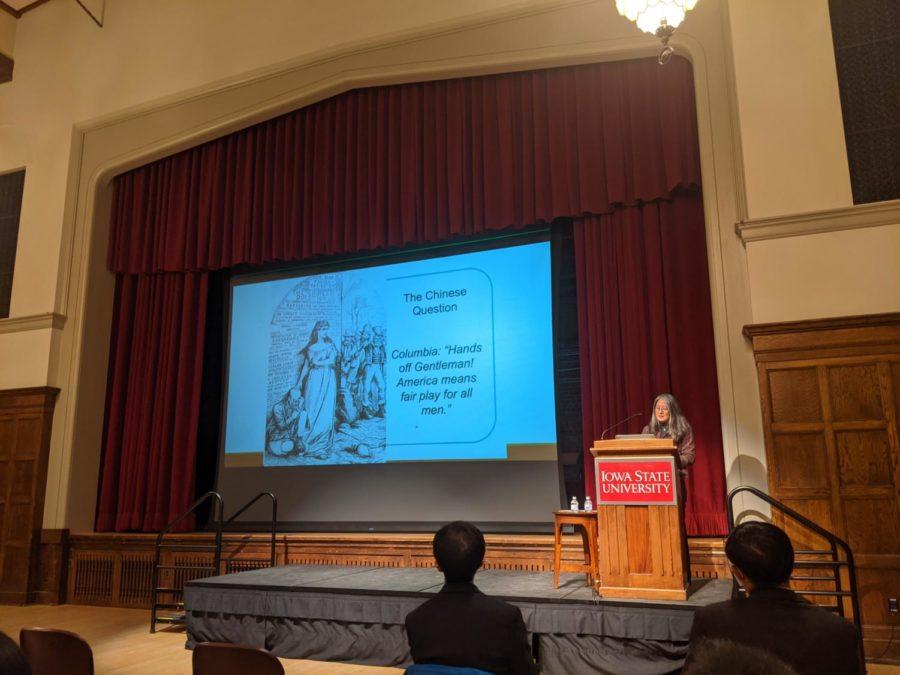Lecture Series hosts lecture on the history of Chinese immigration in the United States
November 16, 2021
Iowa State’s Lecture Series hosted a lecture on the history of Asian immigration to the United States and its cultural implications Tuesday night. Presenting the lecture was Madeline Hsu, historian and professor at the University of Texas in Austin.
Hsu’s lecture began at 6 p.m. in Memorial Union’s Great Hall; the lecture was titled “From Yellow Peril to Model Minority and Back Again: Immigration and Sino-US Foreign Relations.” The lecture covered the history in the United States concerning immigration reform and its impact on Asian populations.
Hsu’s lecture was filled with informative graphs and collections of data, as well as political cartoons to demonstrate American understandings of immigration at the time.
Hsu began her lecture by explaining how the expansion of the United States to the west coast brought about a new era of United States immigration. As Americans began settling in the west and discovered the presence of gold, immigration from Asia increased. Hsu explained how the booming Asian population helped develop the Californian economy but threatened some Americans in a similar fashion that illegal immigrants do today.
As time went on, Americans’ perception of Asian immigrants was flipped multiple times, driven by wars and changes in the socio-economic climate of China and the world as a whole. As China erupted in civil war, many Chinese immigrants became stranded in the United States, but their educational attainments and technical skills motivated efforts to let the immigrants stay in the United States.
“We have this phenomenon right, this contradictory set of attitudes against the Chinese,” said Hsu. “With World War II these views will sort of collapse because China in World War II becomes the United State’s key military ally against the shared enemy of Japan.”
This resulted in the repeal of the exclusion laws against Chinese immigrants and a changed perception of Chinese immigrants. After World War II, immigration was again flipped over with another wave of anti-Chinese sentiment in the United States.
Hsu explained how the waves of immigration reform in the United States changed and reshaped the nation’s perception of Chinese immigrants and the relationship between China and the United States.
After the lecture, one audience member, Brian Behnken, associate professor of history, offered his take on the lecture.
“I think this topic is really important,” said Behnken. “I think that when we think of immigrants and immigration a lot of times we think about folks from Latin America, and I think she makes a really good point that for most of this country’s history when we talk about immigrants, we’re talking about Asian people. When we talk about immigration reform, we’re talking about restricting Asian people coming here.”
This restriction of immigrants based on the place of origin and ethnicity of immigrants is obviously present throughout the United State’s history. Acknowledging this presence and the way it’s affected nations and the world as a whole and its effects on individuals is extremely important.
In addition to its occurrence in Memorial Union’s Great Hall, the lecture was live-streamed and will be available until the end of November at this link.







